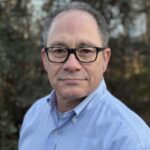One of the main reasons I became a GIS professional is the job security. As a millennial I attended high school during the 2008 economic crash and when I graduated from college, I was hyper aware of the effects this had on the job market. I needed to ensure my skills and degree were recession proof. I am so proud to say that every internship, temporary job, and GIS projects I have worked on have been paid. This is due to the GIS enterprise adoption by state and local government organizations.
GIS technology requirements span across industries as we are highlighting in this blog series. It was during my time at the Kern County public works department that I found out it takes about 1 million dollars to build a mile of road. From dirt to paved asphalt and concrete all that totals to a million dollars. Granted that was a couple of years ago so factoring in inflation I am sure the price has gone up. With that in mind public works departments across the nation have always had to outline and prioritize projects. Adam Carnow, Esri’s public works industry manager, and Christopher Thomas, Esri’s director of government markets, outline equity in public works as the “fair, just and equitable distribution of public services and infrastructure”. So how do our departments prioritize projects within a jurisdictions budget in communities with the most need?
Let’s learn more about the public works industry and how they are incorporating equity throughout their work.
Sophia: Thank you for meeting with me Adam, first can you please define what public works professionals do? Many readers might not be aware of the industries functionalities that they all probably benefit from day to day.
Adam: The American Public Works Association (APWA), which supports those who operate, improve, and maintain public works and infrastructure through advocacy, education, and member engagement, defines public works as: “the combination of physical assets, management practices, policies, and personnel necessary for government to provide and sustain structures and services essential to the welfare and acceptable quality of life for its citizens.” For example, water, utilities, and trash collection are all functions part of public works.
Sophia: Now that we have a bit more background on the functions of a public works department, how would you enhance equity within the public works industry?
Adam: Equity is a large issue that covers many facets of the public works industry, but the most impactful way that the public works industry can enhance equity in our communities is through the fair, just, and equitable distribution of public services and infrastructure. Residents benefit when services and infrastructure investments are provided in an equitable manner. The APWA is committed to improving equity in various ways:
- Identifying their three policy priorities of:
- Emergency Management
- Transportation
- Water Resiliency
- Developing Policymaker Primers for:
- Public Right of Way and Broadband Development
- Workforce Development
- Climate
- Recycling
Christopher: As Adam cites, equity spans across many facets of the public works disciplines. The increased attention on equity offers the opportunity for state and local governments to place a new lens on their work. While basic demographic information has long been a part of long-range planning and maintenance. Governments are being asked to take it up a notch and look more closely at the neighborhoods they serve and look more closely at race, income, gender, age, and person with disabilities. In the past, data was not easily accessible to help make these decisions. Today GIS offers the opportunity to rethink, reengineer, and reimagine the way we extend public works services. There’s an opportunity to adapt facilities and open space to shifting demographics, to allocate capital project dollars to communities in need, to enhance economic mobility, and to keep the public safe.
Sophia: What organizations are successfully pioneering the equity effort in this industry?
Adam: There are lots of examples of local government organizations innovating and developing best practices while bringing equity into their workflows with GIS technology.
- Torrance, California is using demographic and spatial analysis to meet their goal of every electric vehicle driver is never more than one mile from a charging station within the city.
- Austin, Texas used equity in their plan to improve the tree canopy across the city to help battle the urban heat island effect and the bias created by the lack of shade trees in minority and lower income neighborhoods.
- Tacoma, Washington has altered their Capital Investment Planning process to require a review of all proposed projects using an equity index.
- Oakland, California is using equity as part of its data-driven prioritization of traffic safety improvements.
- Fairfax County, Virginia is using a Vulnerability Index they developed in house to review projects across multiple departments including tree planting and LED streetlight conversions.
Christopher: Every day we come across amazing examples of governments using GIS to address inequities in their communities. Each jurisdiction tends to focus in on areas that are unique to their geography. We have connected with jurisdictions that are using GIS to extend broadband, to identify and replace lead in water systems, and to improve ridership on public transit. With climate change being another major theme public works professionals can plan for a more sustainable future dealing with sea rise level and drought, to develop approaches to lessen the impacts of extreme heat and cold and help reduce our carbon footprint by rethinking mobility. As Adam mentioned, The City of Tacoma, WA was a standout jurisdiction to us this year. They were awarded the special achievement in GIS award at the Esri User Conference. They have developed an equity index and set of metrics to truly make a difference. The National League of Cites has called their work a model for others to follow.
Sophia: What data sets do public works professionals need to consider to enhance equity in this space?
Adam: There is a wide variety of data available to assist in analyzing a community through an equity lens. This can start with demographic data that includes age, race, ethnicity, education level, employment, income, housing, access to broadband, predominant languages other than English, etc. There is also the Justice40 data which the federal government is using to identify disadvantaged communities to help focus 40% of the overall benefits of certain federal investments. The Climate Mapping For Resilience and Adaptation tool helps show which areas of our communities are at risk and vulnerable to climate-related impacts. These data sets can be combined with local data of facilities, infrastructure, transportation, employment, education, health and childcare access, and service areas and their related levels of service to see how well or not the community is being served equitably.
Christopher: While there are hundreds of sets data available to public works professionals through Esri offerings, Federal Data Sets, and open data hubs the most important data lies within your own organizations. We have witnessed a rise in cross collaboration with your peers in other departments. Whether we are dealing with humans in crisis like homelessness, substance misuse, the pandemic response, and disaster mitigation many times the data you need to make a difference in equity is contained in your business systems and stems of records, like accounting and finance data, GIS data, and event data from spreadsheets. Setting up a data hub for your organization can open new views and approaches to addressing inequities in your communities.
Sophia: What federal requirements should be considered when addressing equity in this space?
Adam: Much of the federal funding sources earmarked for infrastructure investment at the state and local level has stipulations that require the grantee to document how the funding is being used in an equitable manner.
This includes:
IIJA & BIL – Infrastructure Investment & Jobs Act, aka Bipartisan Infrastructure Bill – In addition to road, bridge, and port repairs and public transit investments, the IIJA provides funds for clean water, expanded access to high-speed internet, cybersecurity, and infrastructure protection from weather disasters.
RAISE – The Rebuilding American Infrastructure with Sustainability and Equity Discretionary Grant Program helps communities build transportation projects that have significant local or regional impact and improve safety and equity.
Safe Streets for All – This program is part of the BIL and provides funding for community projects that help reduce the number of deaths and serious injuries on highways, streets, and roads.
Christopher: GIS has been acknowledged by numerous federal agencies as a mission critical tool for decision support, infrastructure design, and much more. Governments have used ArcGIS Dashboards to fulfill the transparency and accountability requirements associated with federal funding of infrastructure. You can keep abreast of Esri’s efforts to meet the requirements of federal funding by visiting our website dedicated to sharing best practices.
Sophia: Which GIS tools can organizations leverage to advance equity in this industry?
Adam: There is a huge collection of ready to use GIS data and maps in the ArcGIS Living Atlas and Esri Maps for Public Policy. The collection of ArcGIS Solutions includes the Social Equity Analysis, Racial Equity Community and Broadband Outreach solutions. There is also the Climate Mapping for Resilience and Adaptation tool and the Justice40 Atlas as mentioned above.
Christopher: The tools Adam has mentioned are a great start. Products such as ArcGIS Business Analyst have allowed organizations to jump start discussions in their organizations. It’s full of demographic analysis tools that can be combined with your local data. ArcGIS Story Maps help effectively communicate your organizations objectives to stakeholders and constituents. Public works professionals will find real power in combining our equity tools with apps designed to support your workflows through the ArcGIS Solutions.
The Road Ahead
Similar to other industries public works is an expansive field ranging from emergency management, transportation, water and others. Adam and Chris also outlined the breadth of equity and GIS examples. Through this conversation we learned that the public works industry is expanding their use of data and community engagement tools. That the existing projects range from tree canopy, EV charging stations and Capitol Improvement Projects. We also learned that there are several federally available equity data sets such as Justice 40 and CMRA. I hope public works professionals and chief equity officers reading this blog have a greater understanding into how they can collaborate to enhance equitable outcomes with these workflows. If you would like to get started on applying an equity lens in your industry, please visit our resource where we outline four steps you can follow to develop an equity strategic plan.






